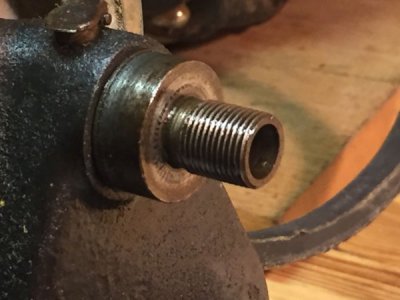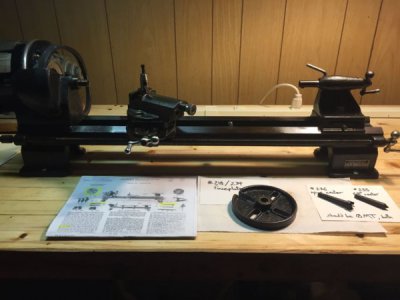Jaredbeck,
Great that you have got yourself a little lathe, It is a beginning, and when you manage to get her set up you can pick up on experience as you move on, It may only be a small simple lathe, but many a man has achieved excellent outcomes on such a machine, Remember these little lathes were constructed in the days before folks were tearing off metal using "Throw away tool tips " and creating blue chips , at a supersonic speed, For a home craftsman , What the hell is the point, Is one on bonus at home? I think most of my contemporaries nowadays , are high speed merchants and believe using high speed (stellite ) tool steel is mostly for the Dinosaurs, I believe learning to sharpen your own tools & learning the basics is a good beginning , You will no doubt go on to a bigger and more complex machine as you develop .
you will look back in a few years time , & think how you got on with that simple little machine, Do not be in a hurry to send it packing as you modernise, Keep it for the little simple tasks , Especially when your hopefully bigger and more modern machine has work set in the chuck you do not want to disturb, Have fun that is the name of the game.
Great that you have got yourself a little lathe, It is a beginning, and when you manage to get her set up you can pick up on experience as you move on, It may only be a small simple lathe, but many a man has achieved excellent outcomes on such a machine, Remember these little lathes were constructed in the days before folks were tearing off metal using "Throw away tool tips " and creating blue chips , at a supersonic speed, For a home craftsman , What the hell is the point, Is one on bonus at home? I think most of my contemporaries nowadays , are high speed merchants and believe using high speed (stellite ) tool steel is mostly for the Dinosaurs, I believe learning to sharpen your own tools & learning the basics is a good beginning , You will no doubt go on to a bigger and more complex machine as you develop .
you will look back in a few years time , & think how you got on with that simple little machine, Do not be in a hurry to send it packing as you modernise, Keep it for the little simple tasks , Especially when your hopefully bigger and more modern machine has work set in the chuck you do not want to disturb, Have fun that is the name of the game.


